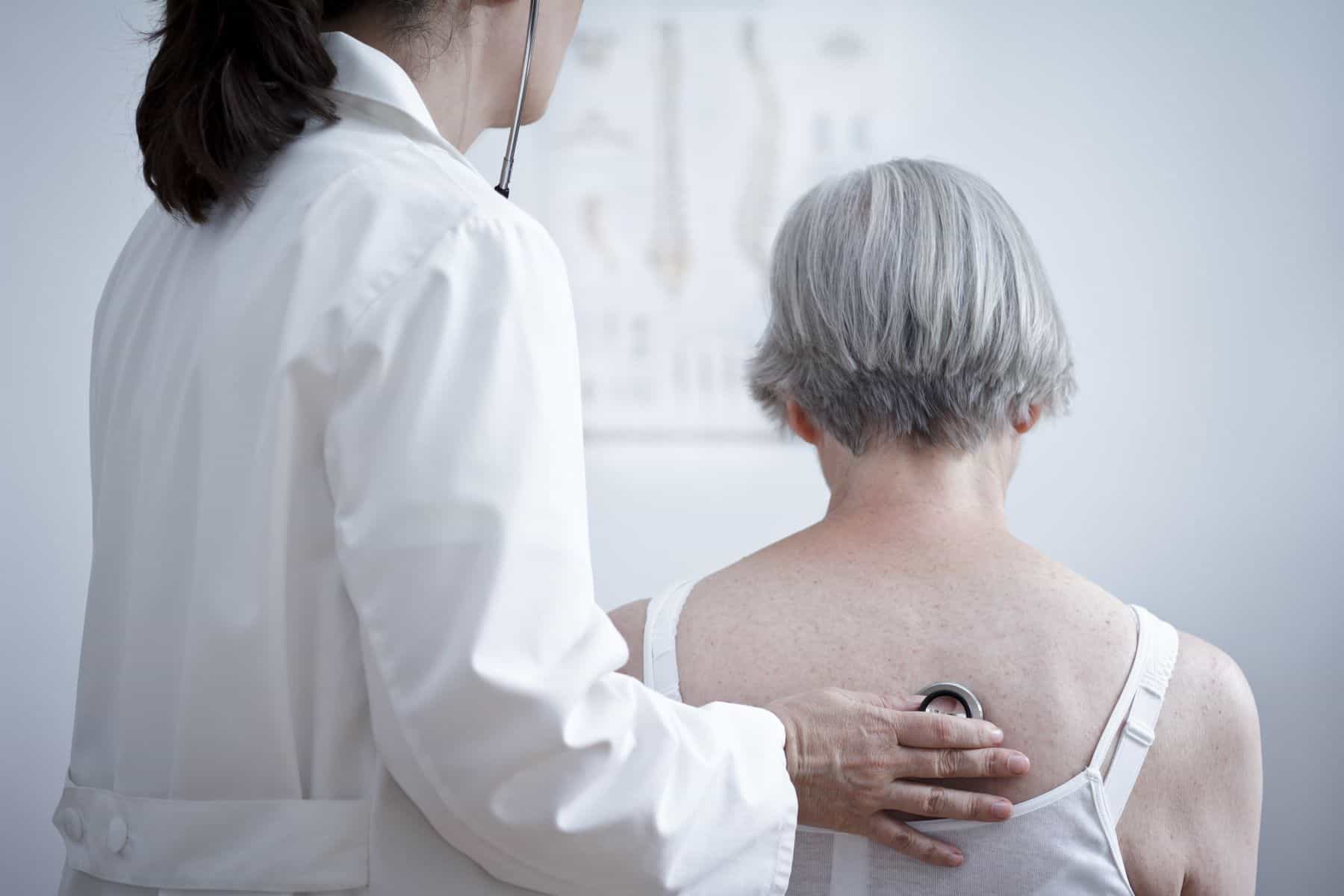Litigation Guides
An Attorney's Guide to Postoperative Pneumonia
Postoperative pneumonia, an acute infection of the lungs occurring in the aftermath of surgical procedures, poses a significant challenge in post-surgical patient care.
Written By
Wendy Ketner, M.D.
Medically Reviewed
What is Postoperative Pneumonia?
Pneumonia is an acute infection of the lungs. Postoperative pneumonia can be defined as either hospital-acquired pneumonia (HAP, pneumonia developing 48-72 hours after hospital admission) or ventilator-associated pneumonia (VAP, pneumonia developing 48-72 hours after endotracheal intubation) occurring in the post-surgical patient.
Reports from the National Healthcare Safety Network (NHSN) in the United States have documented a recent decline in VAP rates related to implementing prevention strategies. However, the highest rates of VAP remain in surgical ICUs.

Prevalence and Severity
- Postoperative pneumonia has been shown to be a common complication for general surgical procedures, with incidences ranging from 0.5% to 28%1
- The most common serious complication after emergency abdominal surgery is a postoperative pulmonary complication with an incidence rate of 20–50%2-4
- The rate of postoperative pneumonia in emergency surgery patients was 2.4 times greater than that in non–emergency surgery patients.5
Risk Factors
Individuals of a certain age or having certain medical conditions face a higher risk of developing pneumonia.
Patient-related Risk Factors:
- Older age
- Poor nutrition status
- Preoperative weight loss
- Pre-existing dysphagia
- Swallowing difficulties from neurocognitive or neuromuscular disease
- Pre-existing comorbidities
- Immunosuppression (e.g., diabetes mellitus, chronic alcohol abuse)
- Pulmonary dysfunction with low pre-existing oxygen saturation (related to COPD)
- Pre-existing pneumonia
- Respiratory muscle wasting
- Smoking history
- Functional status (independent preoperative predictor variable)
- Evidence of bilateral aspiration pneumonia6
Postoperative Factors:
- Bed rest for more than three days after surgery
- Mechanical ventilation for more than 24 hours
- Nasogastric tube use
- Blood transfusion
Diagnosis
Although the diagnosis of pneumonia is based on clinical, microbiological, and radiological criteria in the postoperative period, some classical criteria for pneumonia, such as fever, leukocytosis, and worsening gas exchange, are often present without pneumonia. So, the diagnosis of pneumonia is difficult because the clinical findings are nonspecific.
Also, lung infection can arise from various pathogens with varying clinical and biological markers and imaging manifestations. This is particularly so for postoperative pneumonia with both underdiagnosis and overdiagnosis, depending on diagnostic criteria.
Postoperative pneumonia will be diagnosed when the patient meets both clinical and bacteriological strategies.
Clinical Approach
- The clinical approach means a new or progressive radiographic infiltrate plus at least two of three clinical features (fever greater than 38 °C, leukocytosis or leukopenia, and purulent secretions).
Bacteriological Strategy
- The bacteriological strategy is as follows: Sputum culture was performed at least twice with a fiberoptic bronchoscope or alveolar lavage fluid. Pathogenic bacteria were detected in the sputum culture, and the first positive result appeared within 48 hours after surgery.7
Additional Methods
Blood tests for white blood cells (WBC), procalcitonin (PCT), and C-reactive protein (CRP) have been widely done to detect postoperative pneumonia, but their effectiveness is still controversial.8
Chest x-rays or chest computed tomography and clinical criteria are of limited accuracy in diagnosing postoperative pneumonia.
CRP is sensitive but not very specific, being increased in all inflammatory disorders. Despite its limitations, PCT differentiates better between infectious and noninfectious causes of critical illness than CRP.9
The absolute value of interleukin-6 in the blood is more sensitive in the diagnosis of early postoperative pneumonia than that of PCT and CRP, WBC.
Lactate levels measured at 12 hours after the operation had the highest predictive ability for diagnosis of overall postoperative complications, including postoperative pneumonia and postoperative in-hospital mortality.10
Treatment
The initiation of early appropriate empiric antibiotics to treat HAP or VAP significantly improves patient survival.11 To better understand the antibiotic choice, examining the microbiology of VAP is essential
Rapid initiation of appropriate antibiotic therapy has a significant effect on the outcome. Several trials have shown increased mortality in patients who have inappropriate antibiotic therapy. Inadequate antibiotic therapy is a strong predictor of death in patients with postoperative pneumonia, irrespective of the underlying disease state and severity of illness.12,13 Poor risk factor assessment is one of the main reasons for inadequate antibiotic selection.14
Antibiotic treatment for postoperative pneumonia lasts 7 to 10 days for sensitive pathogens and 14 to 21 days for resistant organisms.
Prevention
HAP Prevention
Some institutions have initiated aggressive HAP prevention efforts in surgical patients to reduce postoperative pneumonia. The program consisted of the education of physicians and staff and a standardized postoperative electronic order set consisting of chlorhexidine oral hygiene, early ambulation, and head-of-bed elevation.15
VAP Prevention
The foremost strategy for VAP prevention is to reduce the duration of mechanical ventilation.16
The development of VAP is related to:
- bacterial colonization of the aerodigestive tract
- aspiration of contaminated secretions into the lower airway
The strategies to prevent infection are therefore:
- reducing bacterial colonization
- decreasing the incidence of aspiration
Works Cited
1.
Chughtai M, Gwam CU, Mohamed N, et al. The Epidemiology and risk factors for postoperative pneumonia. Journal of Clinical Medicine Research. 2017;9(6):466-475. doi:10.14740/jocmr3002w
2.
Fernandez-Bustamante A, Frendl G, Sprung J, et al. Postoperative pulmonary complications, early mortality, and hospital stay following noncardiothoracic surgery. JAMA Surgery. 2017;152(2):157. doi:10.1001/jamasurg.2016.4065
3.
Serejo LG, da Silva-Júnior FP, Bastos JP, de Bruin GS, Mota RM, de Bruin PF. Risk factors for pulmonary complications after emergency abdominal surgery. Respiratory Medicine. 2007;101(4):808-813. doi:10.1016/j.rmed.2006.07.015
4.
Tengberg LT, Cihoric M, Foss NB, et al. Complications after emergency laparotomy beyond the immediate postoperative period - a retrospective, observational cohort study of 1139 patients. Anaesthesia. 2016;72(3):309-316. doi:10.1111/anae.13721
5.
Xiang B, Jiao S, Si Y, Yao Y, Yuan F, Chen R. Risk factors for postoperative pneumonia: A case-control study. Frontiers in Public Health. 2022;10. doi:10.3389/fpubh.2022.913897
6.
Walder B, Story DA. Postoperative pneumonia. European Journal of Anaesthesiology. 2019;36(2):87-89. doi:10.1097/eja.0000000000000922
7.
Kalil AC, Metersky ML, Klompas M, et al. Management of adults with hospital-acquired and ventilator-associated pneumonia: 2016 clinical practice guidelines by the Infectious Diseases Society of America and the American Thoracic Society. Clinical Infectious Diseases. 2016;63(5). doi:10.1093/cid/ciw353
8.
Karakioulaki M, Stolz D. Biomarkers in pneumonia—Beyond Procalcitonin. International Journal of Molecular Sciences. 2019;20(8):2004. doi:10.3390/ijms20082004
9.
van Engelen TSR, Wiersinga WJ, Scicluna BP, van der Poll T. Biomarkers in sepsis. Critical Care Clinics. 2018;34(1):139-152. doi:10.1016/j.ccc.2017.08.010
10.
Veličković J, Palibrk I, Miličić B, et al. The Association of early postoperative lactate levels with morbidity after elective major abdominal surgery. Bosnian Journal of Basic Medical Sciences. 2019;19(1):72-80. doi:10.17305/bjbms.2018.3186
11.
Sachdev G, Napolitano LM. Postoperative pulmonary complications: Pneumonia and acute respiratory failure. Surgical Clinics of North America. 2012;92(2):321-344. doi:10.1016/j.suc.2012.01.013
12.
Harbarth S, Garbino J, Pugin J, Romand JA, Lew D, Pittet D. Inappropriate initial antimicrobial therapy and its effect on survival in a clinical trial of immunomodulating therapy for severe sepsis. The American Journal of Medicine. 2003;115(7):529-535. doi:10.1016/j.amjmed.2003.07.005
13.
Iregui M, Ward S, Sherman G, Fraser VJ, Kollef MH. Clinical importance of delays in the initiation of appropriate antibiotic treatment for ventilator-associated pneumonia. Chest. 2002;122(1):262-268. doi:10.1378/chest.122.1.262
14.
Teixeira PJZ, Seligman R, Hertz FT, Cruz DB, Fachel JMG. Inadequate treatment of ventilator-associated pneumonia: Risk factors and impact on outcomes. Journal of Hospital Infection. 2007;65(4):361-367. doi:10.1016/j.jhin.2006.12.019
15.
Wren SM, Martin M, Yoon JK, Bech F. Postoperative pneumonia-prevention program for the Inpatient Surgical Ward. Journal of the American College of Surgeons. 2010;210(4):491-495. doi:10.1016/j.jamcollsurg.2010.01.009
16.
Demoule A, Girou E, Richard J-C, Taillé S, Brochard L. Increased use of noninvasive ventilation in French Intensive Care Units. Intensive Care Medicine. 2006;32(11):1747-1755. doi:10.1007/s00134-006-0229-z
About the author
Wendy Ketner, M.D.
Dr. Wendy Ketner is a distinguished medical professional with a comprehensive background in surgery and medical research. Currently serving as the Senior Vice President of Medical Affairs at the Expert Institute, she plays a pivotal role in overseeing the organization's most important client relationships. Dr. Ketner's extensive surgical training was completed at Mount Sinai Beth Israel, where she gained hands-on experience in various general surgery procedures, including hernia repairs, cholecystectomies, appendectomies, mastectomies for breast cancer, breast reconstruction, surgical oncology, vascular surgery, and colorectal surgery. She also provided care in the surgical intensive care unit.
Her research interests have focused on post-mastectomy reconstruction and the surgical treatment of gastric cancer, including co-authoring a textbook chapter on the subject. Additionally, she has contributed to research on the percutaneous delivery of stem cells following myocardial infarction.
Dr. Ketner's educational background includes a Bachelor's degree from Yale University in Latin American Studies and a Doctor of Medicine (M.D.) from SUNY Downstate College of Medicine. Moreover, she is a member of the Board of Advisors for Opollo Technologies, a fintech healthcare AI company, contributing her medical expertise to enhance healthcare technology solutions. Her role at Expert Institute involves leveraging her medical knowledge to provide insights into legal cases, underscoring her unique blend of medical and legal acumen.
Subscribe to our newsletter
Join our newsletter to stay up to date on legal news, insights and product updates from Expert Institute.
Speak with a Pneumonia Expert
We're here to help you build a stronger case. Retain a leading expert witness today.
- Access tailored expertise on every case
- Trust your expert immediately
- Speak with your expert before retaining
Need your medical records reviewed? Consult one of our 75+ on-staff physicians who can help evaluate the strengths and weaknesses of your case.


